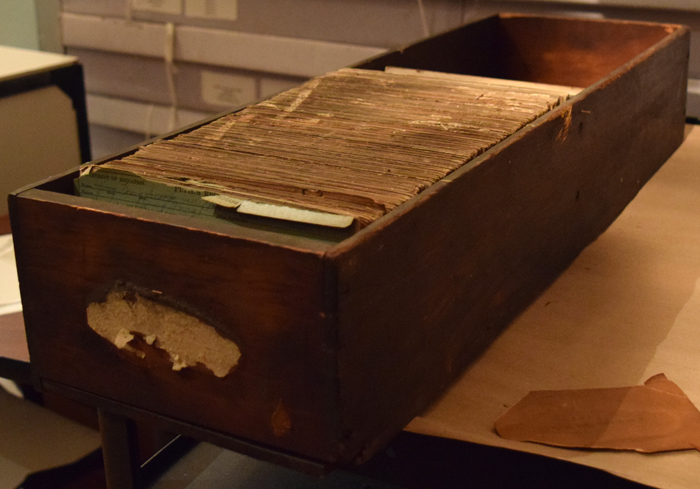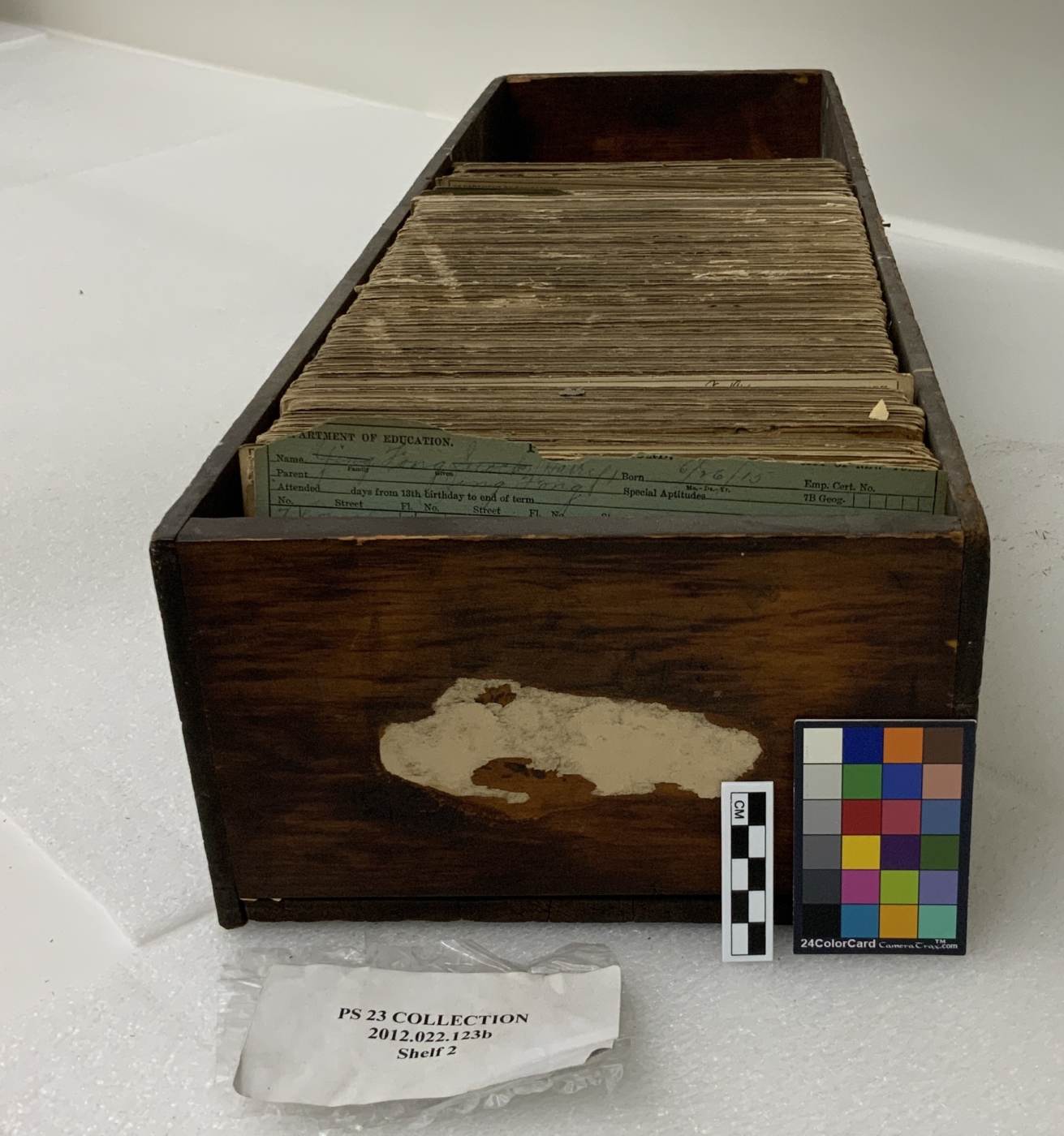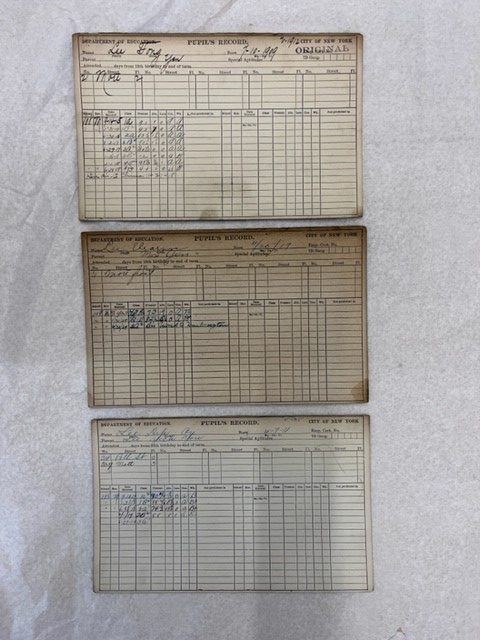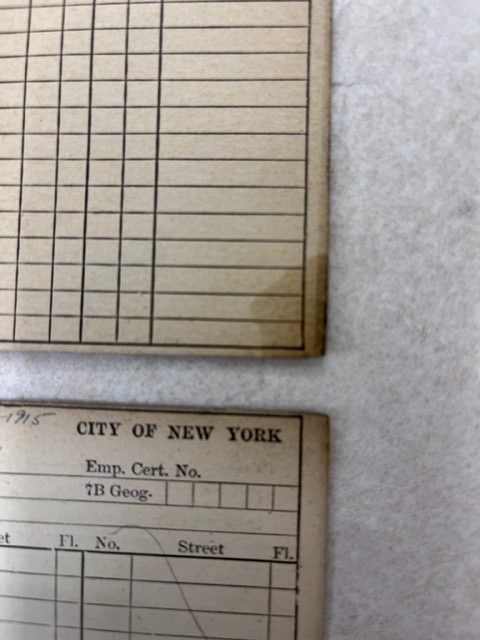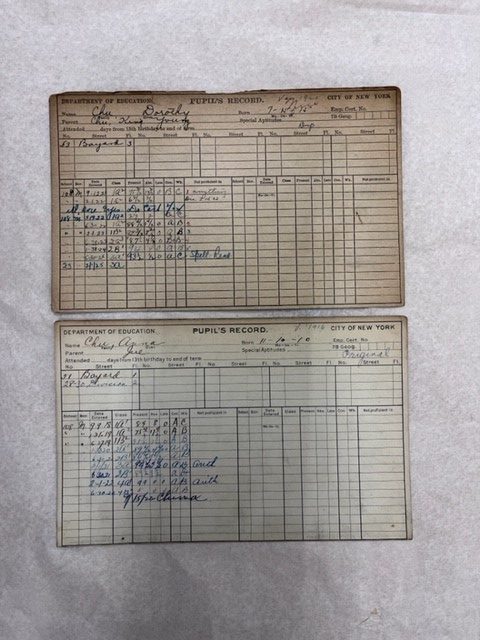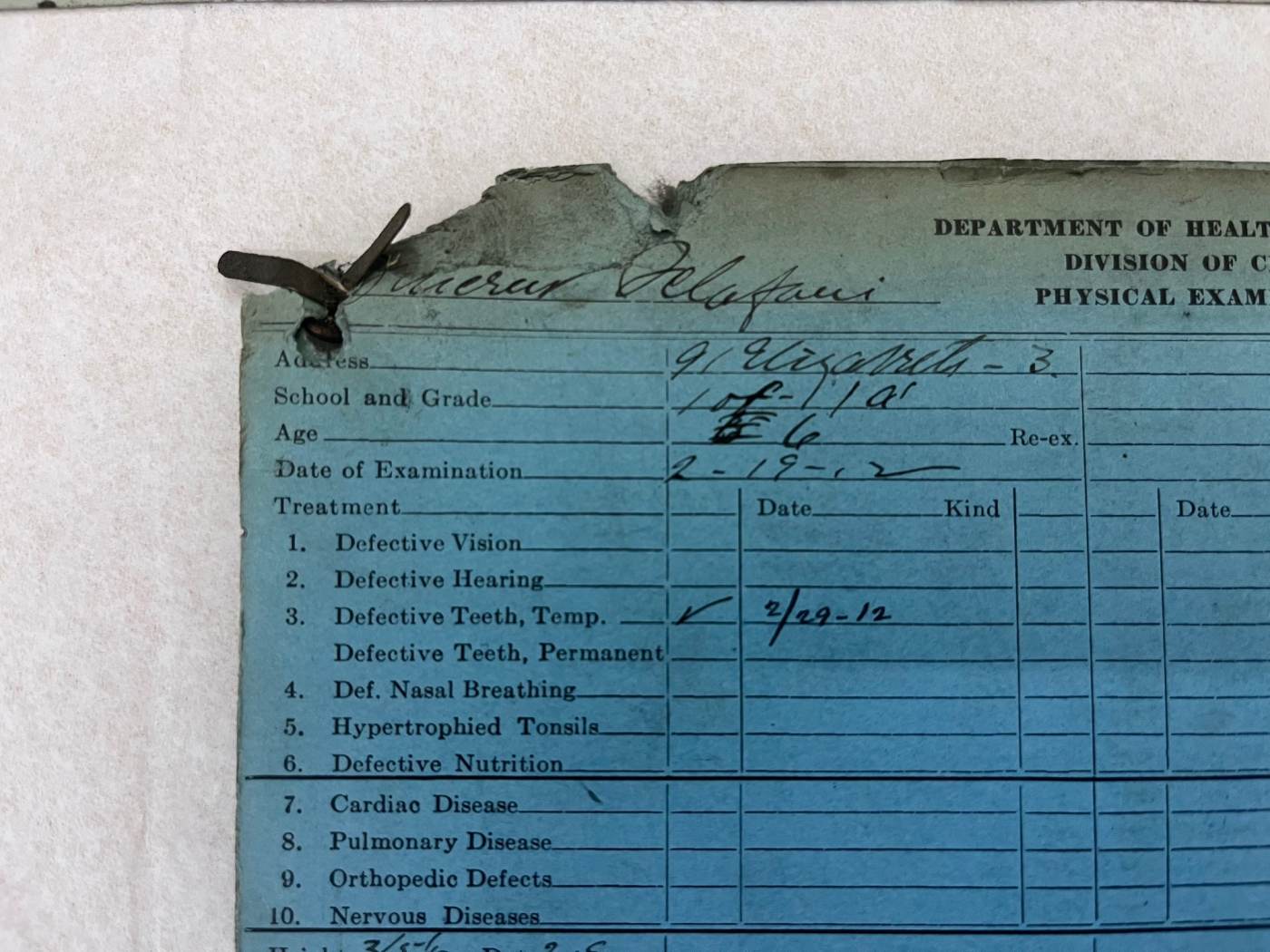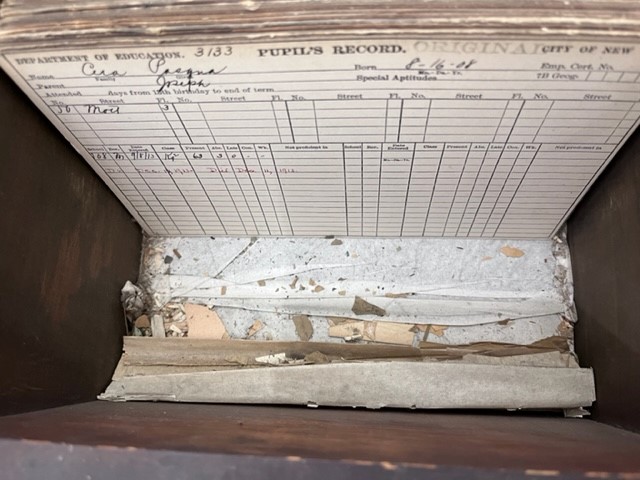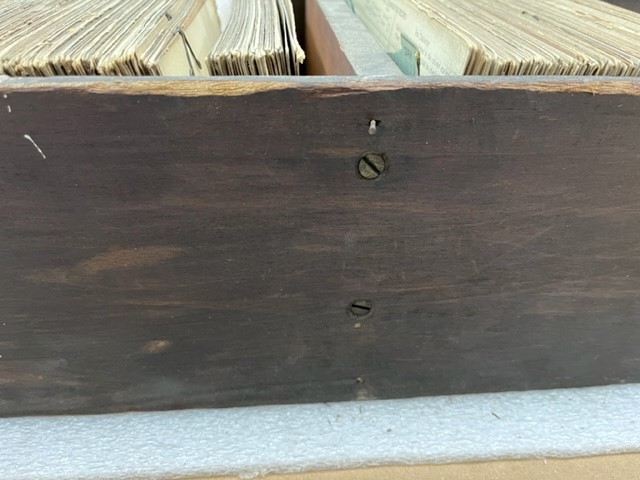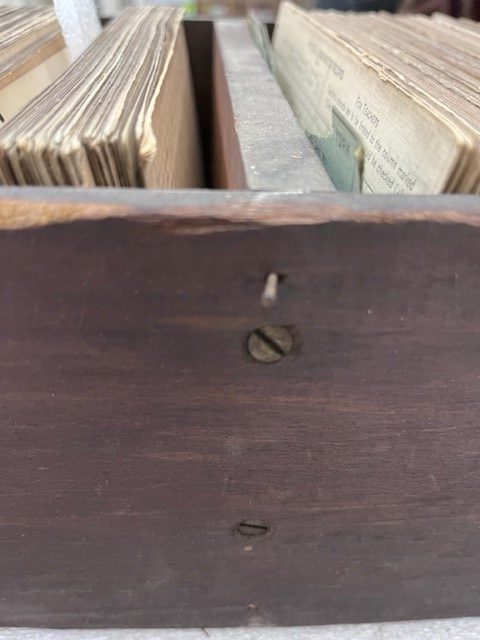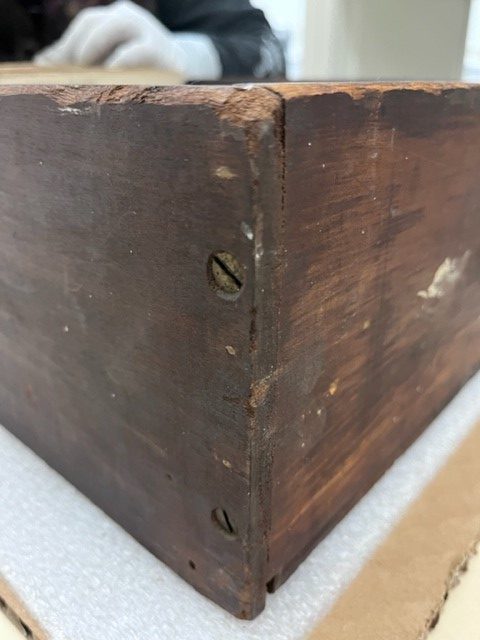This is one of two wooden drawers filled with the earliest academic records and physical examination results of students at various schools, starting with P.S. 108, but many of whom later attended P.S. 23. Most of the students were born in the early part of the twentieth century but some records go as far back as the 1880s. The drawers of records help document the history of an important community institution which adapted its education to meaningfully serve the needs of the immigrant and working-class community in which it was rooted. Because every members’ labor was often needed to help their families make ends meet, P.S. 23 in this era began to offer evening classes and accepted entire working families into their night school. Grandmothers attended English classes and mothers learned dressmaking, millinery and other skills to earn extra income for their families. In 1905, the New York Tribune dubbed Public School 23 “the school of twenty-nine nationalities” for the diversity of its student body, and the record cards photographed above indicate that a handful of Chinese students were among them. Over later decades, the bounds of Chinatown gradually expanded to encompass P.S. 23 at 70 Mulberry, and by 1920, about 50 percent of P.S. 23 students were Chinese. By 1950, they became almost entirely Chinese and Chinese American.
This drawer of records is needed for display in a Museum of the City of New York exhibition in later 2022. As such, we have determined it to be a priority for repair and conservation so that it will be in stable condition for loan and display, and to ensure its longterm preservation.
